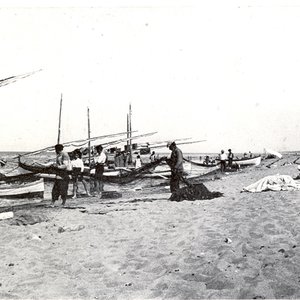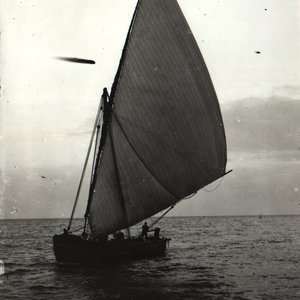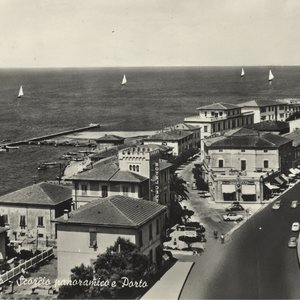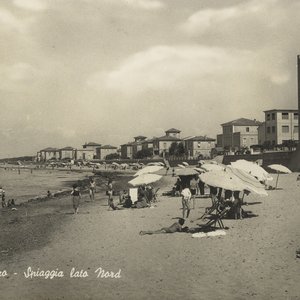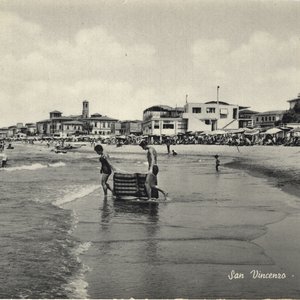
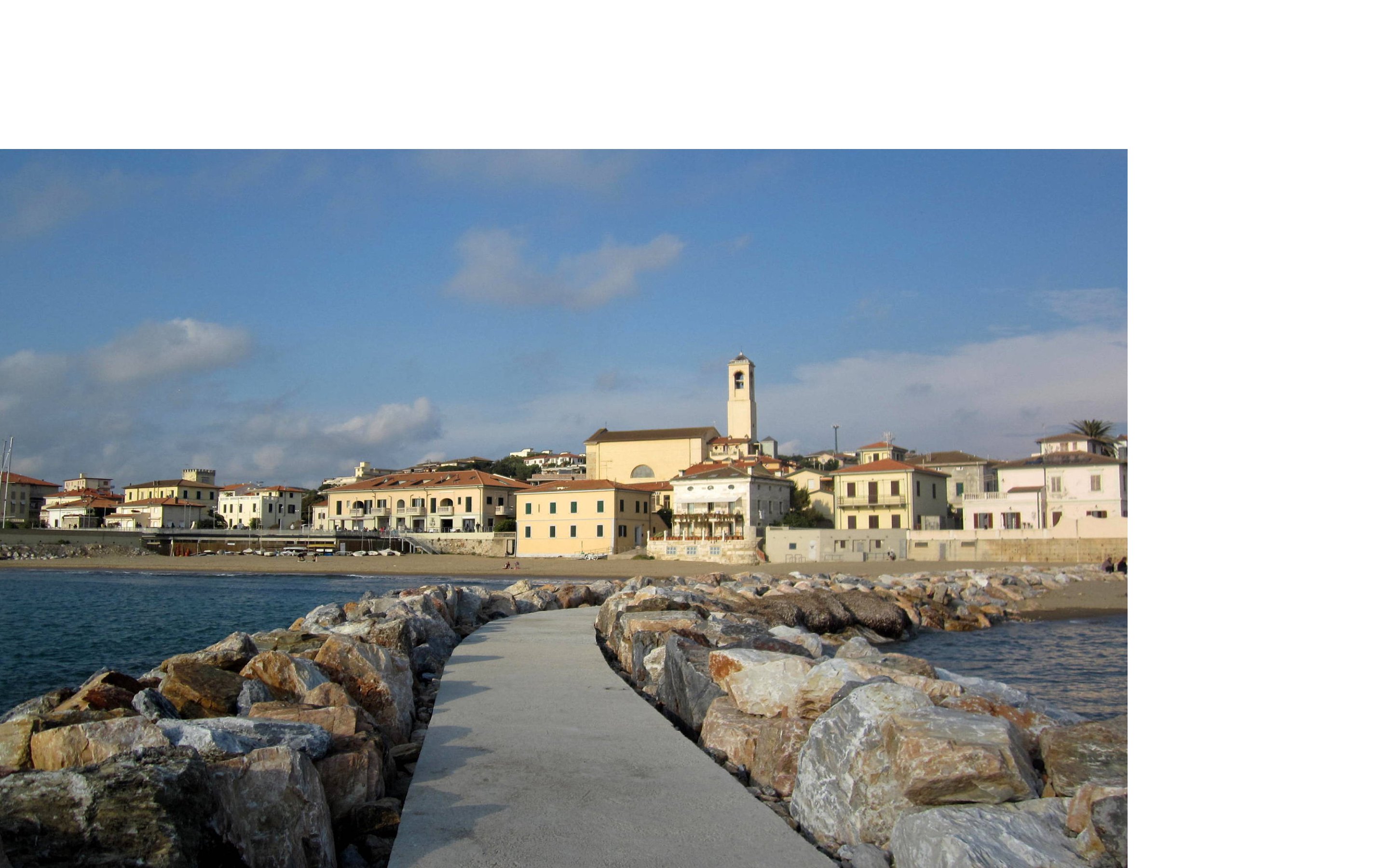
SAN VINCENZO
Golden beaches, art, salt water and good food at the centre of the Costa degli Etruschi
San Vincenzo lies at the centre of the Costa degli Etruschi, a strip of land that runs from Livorno down to Piombino.
Its strategic position and excellent road and rail connections make it possible to quickly reach the great cities of art such as Florence, Pisa, Siena and Rome. In the surrounding area, moreover, a very interesting tourist offer unfolds, ranging from the author's wine cellars to the thermal baths, from the most beautiful parks in Tuscany to the suggestive medieval villages of the hinterland, from the vast sandy beaches to the cliffs of the promontories that conceal coves so hidden as to be almost unreachable.
History
San Vincenzo has been inhabited since ancient times.
The first traces of human presence date back to the Upper Paleolithic period and reach uninterruptedly to the present day.
The word San Vincenzo first appears in 1304 to name the Tower of San Vincenzo. But its name has a more remote origin.
Etruscans, Romans and more
The Etruscans did not miss the strategic importance of San Vincenzo. Its proximity to Populonia, at the time a very powerful Lucumonia, made it an attractive place both for the presence of mineral deposits and extensive forests. Between the 9th and 5th centuries BC. San Vincenzo thus became an industrial and trading area linked to mining.
With the conquest of the area by the Romans, the Via Aurelia arrived and a small village and landing place was built. But because of the particular morphological structure of the Populonia Promontory, it remained the nerve center of the entire area.
As a result of the wars fought by the Byzantines against the Goths (535 - 553) and by the Byzantines against the Lombards (the 1670s), coastal Tuscia (an ancient term for the Tuscan Coast) was marked by bloody clashes. Populonia, which became a diocese, slowly depopulated and the episcopal see was transferred to Massa Marittima.
The Lombards to control Tuscia adhered to the rules of St. Benedict, and King Lituprando to stop Saracen raids sent St. Wilfrido, considered the progenitor of the Della Gherardesca family, to the territory. The vicissitudes of St. Wilfrid and the Benedictine monks are of great interest to our municipality, for it was they who named it San Vincenzo.
The Tower of San Vincenzo
In the 8th c. St. Wilfrid built a vast network of defensive constructions, including the fortress of Biserno. To date there is not much information about this building and its fate, the only thing that is certain is that around the 12th century there was a castle of the same name. Erected on the slopes of Mount Coronato, its major representative was Messer Lisernitio Casiglitta Muccio da Biserno, also called Inghiramo. From the same ancient stock as the Della Gherardesca family, and endowed with a marked military ingenuity, the Republic of Florence elected him captain of the Guelph Taglia.
Because of this alliance and the wars fought against the Ghibellines, in 1304 the Republic of Pisa destroyed the castle. And the Bisernese left that place to go and live around the coastal tower. The new village, built by the Republic of Pisa, consisted of hovels of fishermen and peasants, complete with a customs house and loading dock.
On August 17, 1505, the Tower of San Vincenzo was the scene of a legendary battle between the army of Pisa and that of Florence. Having won the battle by the Guelph troops, the Florentine government assigned the Campigliese captain and magistrates to administer the coastal strip including the small village of San Vincenzo.
The Church of San Vincenzo Ferreri
The Church of San Vincenzo Ferreri is the oldest of the three churches in San Vincenzo - the other two being the Church of Sant'Alfonso in the new town and the Church of Santa Barbara in San Carlo-and is located right in the center of the town.
Its construction was begun in 1855 to replace the old oratory that stood next to the tower, thanks to the interest of the Grand Duke of Tuscany Leopold II, and was completed in 1861. After being consecrated to San Vincenzo Ferreri, it was finally opened for worship on December 24, 1865.
The style of the new church, for which the Grand Duke had mobilized distinguished designers, was and is very simple: a single nave with a central altar for which the wooden one from the old oratory was initially used. Later the stone altar replaced the previous one, which was used for the side chapel dedicated to San Vincenzo and made from a later addition.
From the old oratory, in addition to the altar, two paintings depicting San Vincenzo Ferreri and the Annunciation, respectively, by an unknown author, were transferred to the new church and are preserved in a parish hall. In the background of the church chancel towers a Deposition by Campigliese painter Carlo Guarnieri.
Originally the church had three doors. The side ones were eliminated in the early 20th century as a result of work that altered the beautiful initial line soaring toward the sky and perfectly harmonized with the center-lateral stairways.
In 1978 the young San Vincenzo painter Giampaolo Talani was commissioned to carry out a series of frescoes on the theme of the New Testament to embellish the walls and vault of the church. The work, which consists of the fresco of 12 stories on the life of Christ, was completed by Talani in 1987.
The frescoes are arranged in chronological order on the walls of the church and included in a balanced manner in the interior architecture of the building.
The Grand Duke's agrarian reform
Between the 16th and 18th centuries the area was sparsely populated. In the whole area, including the Torraccia, Caldana di Venturina up to about two kilometers from the Tower of San Vincenzo, there was a marshy and unhealthy lake. The situation began to change after the mid-18th century, when in March of the year 1770 Peter Leopold of Habsburg-Lorraine, Grand Duke of Tuscany "deigned to ascend and observe the Tower with the adjacent beaches." The grand ducal measures had positive effects. Large portions of land were removed from marshy waters and scrubland, and the land became arable.
The agrarian reform initiated by the noble Alliata family in the late 19th century, the settlement of some fishing families from southern Italy, and the rise of tourism represented positive stimuli for the local economy and culture.
The first vacationers
Thus, in 1928 the number of residents living in San Vincenzo rose to about 2,000 people, to which vacationers had to be added. Among the latter it is necessary to mention the presence of one of the most distinguished writers of Italian literature, Luigi Pirandello. He stayed several times in the house owned by Mancianti in Piazza della Vittoria, near the places frequented by his fishermen friends.
Those places were mainly two, the "boats" and the "pit." The first area, located where the harbor is today, was so called because it indicated the strand from which boats departed and returned. The "hole" was located beyond a large reedbed, on the northern border with the forest and the beach.
The life of fishermen
During the war years, "rezzole," nets similar to seines but smaller in size, gave fishermen and their families an opportunity to escape poverty. With the waning of winter, when the first moon of March appeared, fishing began and lasted until the "castagnara" season. A term used by the Ponzese, to compare the large and profitable sardines caught in the autumn months with the chestnuts gathered in the woods during the same season.
The importance of fishing to the local economy was evidenced by the Friggera, an establishment devoted to preparing and canning the sardines caught in front of the San Vincenzo Sea. Unlike other seas where many salacious fish ended up in the catch, the local flotilla, consisting in the early 1940s of about 20 large boats, brought ashore sardines whose quality had few rivals. The trademark was "Dantes." A "marketing" choice motivated by the existence of the famous "Nantes" sardines canned in Brittany and sold throughout Europe.
As the war unfolded, however, the fishermen's lives became increasingly difficult. In late 1943 and early 1944, the Allies' constant bombing of the railway line and the Aurelia highway forced the San Vincenzo community to find refuge inland. Thus came the morning of June 26, 1944, also remembered as the Battle of San Carlo, in which the Allies defeated German troops.
With Decree No. 414, signed by the President of the Republic on June 3, 1949, San Vincenzo became an autonomous municipality, detaching itself from Campiglia Marittima.

